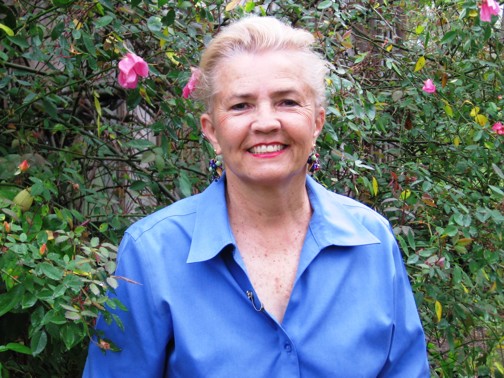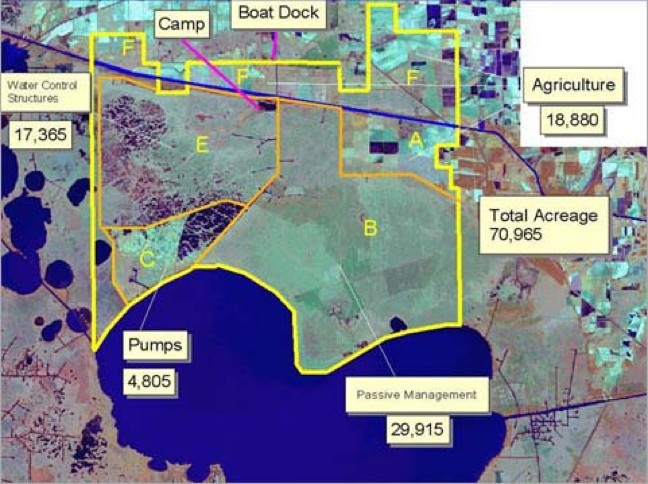Whooping Cranes

Mary Courville was speaking about the re-introduction of one of the rarest cranes to Louisiana’s coastal zone. Over the past decade, biologist and scientists have been investigating the
possibility of returning a portion of the rebounding whooping crane population to the marshes of White Lake Wetland Conservation Area and/or Marsh Island Refuge. After more than ten years of research and deliberation, Mary Lynch Courville and others involved in the restoration effort are very optimistic. She also notes that: “According to Texas Parks and Wildlife, the economic impact of having the rarest crane in the world in your area can be a million dollars a month”.
The whooping crane’s geographic range once extended from Canada to Mexico and from Utah to the Atlantic coast. However, since the 19th century, the whooping crane population substantially declined due to habitat loss, hunting pressure, and unregulated egg/specimen collections. In 1941-1942, the population of whooping cranes declined to less than 20 individuals because of these three factors.
The whooping crane population, however, rebounded in the last few decades because of conservation efforts in the United States and Canada. For example, the remaining natural flock of whooping cranes has been increasing since the 1940s. This flock of cranes that breed in Wood Buffalo National Park in Canada and winter in Texas at Aransas National Wildlife Refuge has increased to over 200 individuals in 2006. Additionally, re-introduction efforts have been successful in developing a non-migratory flock at Florida’s Kissimmee Prairie and a migratory flock that migrates from Wisconsin to Chassahowitzka National Wildlife Refuge in Florida. The biological community involved in whooping crane preservation have expressed an interest in re-introducing cranes to Louisiana. The cranes inhabited the coastal marshes of Louisiana as recent as the 1950s.

At the forefront of the Louisiana re- introduction effort is Mary Lynch Courville of Lafayette, Louisiana. Mary has been interested in whooping cranes since childhood, as a result of her upbringing in a family heavily involved in natural resource management and wildlife rehabilitation. She served as the secretary-treasurer of the Whooping Crane Conservation Association for 15 years and currently assists with the coordination of the whooping crane re-introduction in Louisiana. For this endeavor, she serves as a liaison between the local and scientific communities, assists with acquiring funds, and helps with public relations obligations.

When asked about her personal influences, she speaks fondly about her late father, John J. Lynch. John Lynch was a research biologist with the United States government where he was involved in avian and wetland research and management that included whooping cranes,waterfowl, and a variety of other flora and fauna. He successfully hatched the first whooping crane in captivity and assisted with the capture of the last remaining whooping crane in Louisiana that was later released in Aransas, TX. At the end of his career, many considered him to be the “father of the whooping crane” and a “pioneer of flyway biology.”
Mary is passionate about the potential re-introduction of whooping cranes to the White Lake Wetlands Conservation Area. She believes that the White Lake area is ideal crane habitat due to its isolation, abundant food supply, and management capabilities. According to Mary, water levels within the preserve can be manipulated to best suit the cranes that will inhabit the area. Further, it is the last recorded nesting site for whooping cranes in Louisiana (circa 1930s). Additionally, Mary believes that the area is well suited for eco-tourism without disturbance to the cranes. According to Mary, White Lake can be easily setup to accommodate public access to view whooping cranes from afar.
Mary is interested in developing and promoting eco-tourism and educational opportunities. She feels that outreach and education about whooping cranes and the environment are critical for future stewardship of renewable natural resources. Once the re-introduction occurs, she hopes to create a whooping crane visitors center that will provide research and education opportunities for students of the community. To support this objective, she hopes to coordinate an effort to designate a pair of captive whooping cranes for educational purposes in the Acadiana area.

When asked about the success of the re- introduction project, Mary stated that success could be identified by three steps. According to Courville, the initial stage of success would be the release of whooping cranes in Louisiana. The second stage would be when there are enough pairs to rear chicks at White Lake. Finally, the overall project success would be a sustainable population of cranes in Louisiana. Mary believes that a partnership for conservation is needed to make a restoration effort successful.
Although it has been a “lengthy process,” Mary Courville is confident that the restoration effort will commence soon. According to Courville,“we are closer than ever.” Further, her involvement in the correspondence between the agencies, landowners, and non-profit organizations involved in the restoration has been instrumental in expediting the effort. She has played a key role in keeping the local community up to date on the status of the project and providing project goals and details. As a result, the local community has fully supported the endeavor.
A whooping crane conference was held in Lafayette, LA, from January 29 – February 3, 2007, to discuss details of the potential re-introduction in Louisiana. Pending the results of habitat suitability research, whooping may be re-introduced to Louisiana as soon as three to five years.

For Further Information:
http://www.wlf.louisiana.gov/wildlife/whooping-cranes
http://ecos.fws.gov/speciesProfile/profile/speciesProfile.acti on?spcode=B003
http://www.nytimes.com/2009/02/22/magazine/22cranes-t.html?pagewanted=all
Note added by RET:
Twenty-six whooping cranes were brought to the White Lake area in 2010 and 2011, but predators got some and two were shot. An additional fourteen were introduced in fall, 2012.
